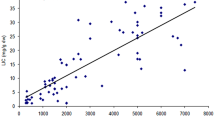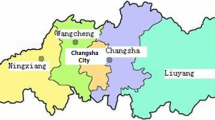Abstract
Based on precise evaluation of hematological findings and clinical manifestations, the relationship between genotype and clinical phenotype was studied in 475 Greek patients with β and δβ thalassemias. Almost all known genotypes are included in this series, but the most frequent was homozygous βth high A2 (71.6%), βth/βth silent (7.4%), βth/δβoth high F (6.3%) and βth/βth Dutch (6.3%).
In general, the phenotype was related to the genotype, though clinical heterogeneity was detected among patients with the same genotype. The severe type of thalassemia major was most commonly found in homozygous βth patients mainly of βo/βo and βo/β+ genotypes while homozygous β+ patients had milder clinical manifestation. Furthermore a small group of patients, characterized as homozygous β++ (HbF<30%) had mild thalassemia intermedia. In addition mild thalassemia intermedia was principally related with homozygous δβoth, and compound heterozygous βth/βth silent I, and less frequently with other genotypes such as compound heterozygous with βth/βth Dutch, βth/βth silent II, βth/δβth high F or Lepore.
It was shown that precise genetic characterization and clinical evaluation is of primary importance in predicting the prognosis and formulating the proper treatment for the individual patient with thalassemia.
Similar content being viewed by others
References
Chini V, Valeri CM (1949) Mediterranean hemopathic syndromes. Blood 4:989–996
Dacie J, Lewis SM (1975) Practical haematology, 5th edn Churchill, London
Friedman S, Hamilton RW, Schwartz E (1973) β-thalassemia in the American Negro, Clin Invest 52:1453–1459
Kattamis C, Metaxotou-Mavromati A, Karamboula A, Nasika E, Lehmann H (1973) The clinical and hematological findings in children inheriting two types of thalassemia: High A2 type beta thalassemia, and high F type or delta beta thalassemia. Br J Haematol 25:375–348
Kattamis C, Karamboula K, Metaxotou-Mavromati A, Ladis V, Constantopoulos A (1978) Prevalence of βo and β+ thalassemia genes in Greek patients with homozygous β-thalassemia. Hemoglobin 2:29–46
Kattamis C, Metaxotou-Mavromati A, Wood WG, Nash JR, Weatherall DJ (1979) The heterogeneity of normal HbA2 β-thalassemia in Greece. Br J Haematol 42:109–123
Kattamis C (1980) Screening for hemoglobinopathies. In: Bickel H, Guthrie R, Hammersen G (eds) Neonatal screening for inborns errors of metabolism, Springer Berlin Heidelberg New York pp 133–147
Schokker RC, Went LN, Bok J (1966) A new genetic variant of β-thalassemia. Nature 209:44–48
Silvestroni E, Bianco J, Vallisneri E (1949) Nuovo constributo allo studio della questione genetica del morbo di Cooley. Minerva Pediar 1:136–145
Stamatoyanopoulos G, Fessas P, Papayanopoulou TF (1969) Thalassemia: A study of thirty-one families with simple heterozygotes and combination of F thalassemia and A2 thalassemia. Am J Med 47:194–208
Weatherall JD, Clegg BJ (1981) The thalassemia syndromes, 3rd edn. Blackwell, Oxford
Willcox MC, Weatherall DJ, Clegg JB (1975) Homozygous beta thalassemia in Liberia. J Med Genet 12:165–173
Author information
Authors and Affiliations
Rights and permissions
About this article
Cite this article
Kattamis, C., Metaxotou-Mavromati, A., Ladis, V. et al. The clinical phenotype of β and δβ thalassemias in Greece. Eur J Pediatr 139, 135–138 (1982). https://doi.org/10.1007/BF00441497
Received:
Accepted:
Issue Date:
DOI: https://doi.org/10.1007/BF00441497




